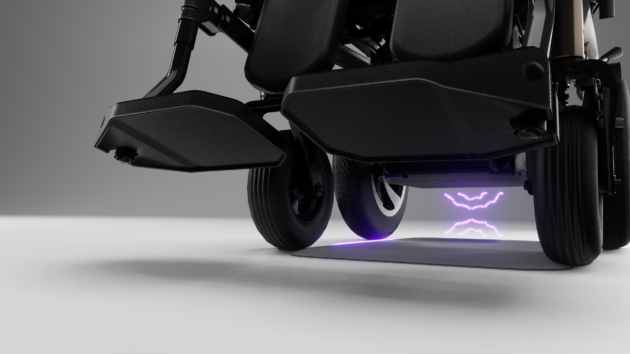
Design profile: AWL-Electric’s wireless charger for motorized wheelchairs
André Voshart
MedicalMontreal-based AWL-Electric’s Agile Station is a groundbreaking wireless charger for motorized wheelchairs, designed to enhance user autonomy and simplify the charging process.

AWL-Electric’s Agile Station is a wireless charger for motorized wheelchairs. (Credit: AWL-Electric)
The inspiration originated from co-founder Emmanuel Glen’s scientific innovation in wireless power technology and his motivation to enhance people’s lives. Along with co-founder Francis Beauchamp-Verdon’s background and personal connection to rehabilitation, they developed the Agile Station to address the need for greater autonomy and ease of use in charging mobility devices.
Having a mother who was the president of a rehabilitation hospital and having suffered a spinal injury himself, Beauchamp-Verdon was deeply aware of the challenges faced by individuals with mobility impairments.
A standout part of the Agile Station is its ability to charge wheelchairs autonomously, simply by positioning them over the charging mat. “This feature is crucial as it eliminates the need for manual plugging, enhancing the autonomy of users and reducing the dependency on caregivers,” Beauchamp-Verdon says. “This design aspect is significant because it directly responds to the needs for increased independence among wheelchair users.”
The design challenge of creating a product that functions reliably in all environments, including outdoor conditions, was solved through advanced engineering and durable materials that ensure performance in various climates. They incorporated high-end, cutting-edge technology into a robust mechanical design that was waterproof, functioned in all environments and could withstand outdoor conditions.
“This approach ensured that the charger not only met these rigorous standards but also maintained its performance integrity in diverse settings, from humid conditions to temperature extremes, thus broadening its applicability across different geographical location,” Beauchamp-Verdon says.
User feedback played a central role in shaping the design, ensuring the product was both practical and intuitive. Early iterations involved more complex indicators for proper parking on the charging mat, but user input led to a simplified design—a single green light indicator to signal correct placement. This process of listening to real-world users helps make the Agile Station more accessible and functional.
To ensure scalability and affordability, Amélie Tétreault and Stefano Eugeni helped to streamline the production processes. “This dynamic duo plays a crucial role in supporting the engineering team to ensure that the Agile Station remains at a reasonable price and is manufacturable,” Beauchamp-Verdon says. “Their combined expertise has been instrumental in streamlining the production process, focusing on creating a scalable design from the prototype phase to mass production.”
Explore all the MedTech design profiles in this series:
- Axtion’s portable lift for fall prevention and recovery
- Cheelcare’s self-levelling mobility system
- AWL-Electric’s wireless charger for motorized wheelchairs
- Braze Mobility’s blind-spot sensors for wheelchairs
- Seleste’s smart glasses enhance independence
- Trexo Robotics empowers children to walk
Print this page
Advertisement
<
